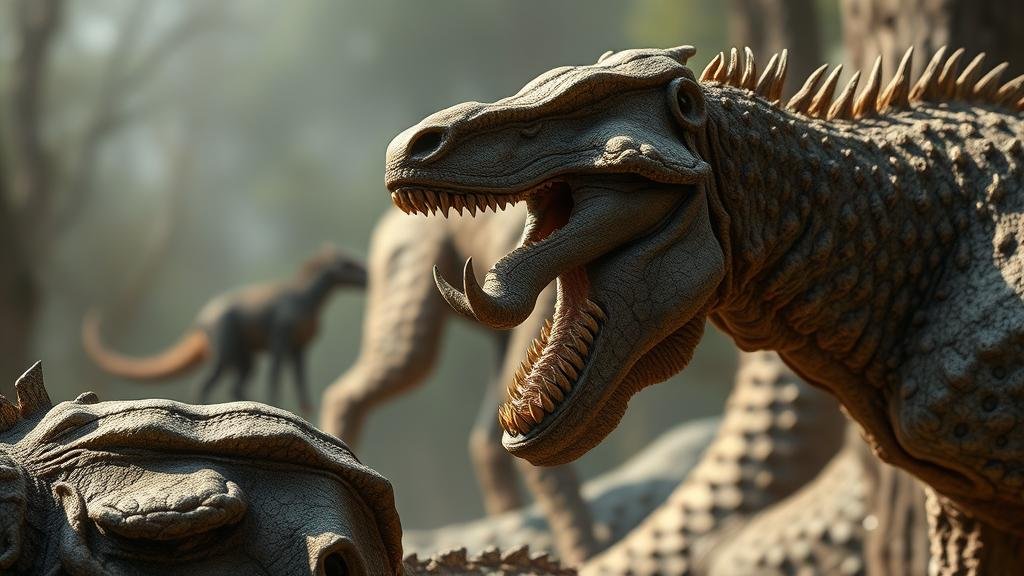The hidden story of ancient animal species in cryptozoological studies.
The Hidden Story of Ancient Animal Species in Cryptozoological Studies
Cryptozoology, often regarded as the study of hidden or undiscovered animals, stretches far beyond the mere pursuit of mythical creatures such as Bigfoot or the Loch Ness Monster. It delves into the rich tapestry of paleobiology, exploring the ancient animal species that once roamed the Earth, many of which may still have living descendants or have sparked folklore around the world. This article explores the intersection of cryptozoology and ancient species, shedding light on how these studies impact our understanding of biodiversity and evolution.
Understanding Cryptozoology
Cryptozoology is defined as the study of animals whose existence is not substantiated by mainstream science. Its practitioners search for animals like the Mokele-Mbembe in the Congo River basin or the Chupacabra in Puerto Rico. But, cryptozoology can also encompass the investigation of ancient species thought to be extinct. This exploration raises fascinating questions about evolution, extinction events, and the biodiversity we still have yet to discover.
The Link Between Cryptozoology and Paleontology
Many researchers in cryptozoology rely on paleontological findings to bolster their theories about ancient creatures that might be hiding in modern environments. For example, the coelacanth, a fish once thought extinct for 66 million years, was discovered alive in 1938 off the coast of South Africa. This significant finding illustrates how cryptozoological claims can sometimes align with emerging scientific evidence.
Ancient Species and Their Modern Counterparts
Several modern-day animals have connections to ancient species, offering a glimpse into their evolutionary paths. These relations provide a context for cryptozoologists as they investigate possible undiscovered species.
1. Woolly Mammoth
The woolly mammoth (Mammuthus primigenius), which roamed the Earth until about 4,000 years ago, serves as a focal point for studies bridging the gap between extinct and possible living relatives. Recent research suggesting that modern elephants share common genetics with these ancient giants fuels speculation about the existence of similar, undiscovered relatives in remote Arctic regions.
- For example, DNA recovered from woolly mammoth remains on Wrangel Island in the Arctic is providing insights into their adaptations to cold climates.
- Cryptozoologists have speculated that there might still be undiscovered populations of elephant-like mammals in the remote tundra.
2. The Thylacine
The thylacine, or Tasmanian tiger (Thylacinus cynocephalus), was declared extinct in the 20th century. Still, numerous reported sightings in Tasmania have perpetuated interest in its potential survival. The thylacines resemblance to a canine belies its marsupial lineage, emphasizing the complexity of classifying animals.
- In 1936, the last known thylacine died in captivity, but locals continue to claim sightings, prompting ongoing exploration and study.
- Geneticists are now examining preserved specimens to ascertain if cloning techniques might one day revive this species.
The Role of Folklore in Cryptozoological Studies
Folklore often serves as a repository of ancient knowledge about animal encounters, presenting another layer of interest in cryptozoology. Many cultures around the world have legends about animals that could be based on long-forgotten species or misidentified living creatures.
Bridging Folklore and Science
Legends of large, cat-like creatures in the Americas may have roots in the saber-toothed cat (Smilodon) or other prehistoric predators. Folklore provides a cultural context that can inspire scientific inquiry.
- Research in specific localities often leads to discoveries that correlate with historical reports.
- Notable examples include the reports of the Cryptid Canids in various global myths, closely matching descriptions of ancient wild dogs.
Challenges in Cryptozoological Studies
While the pursuit of ancient species and their existence in modernity is compelling, it poses significant challenges.
Scientific Skepticism
Many in the scientific community view cryptozoology with skepticism due to the lack of empirical evidence supporting the claims. To overcome this, cryptozoologists must balance anecdotal evidence with rigorous scientific analysis.
Environmental Concerns
Investigating remote and often delicate ecosystems can provoke ethical concerns regarding conservation and environmental impact. It is crucial for cryptozoologists to demonstrate environmental stewardship as they seek to uncover ancient truths.
Actionable Takeaways
The hidden stories of ancient animal species in cryptozoological studies remind us of the ever-evolving tapestry of life on Earth. Engaging with these studies not only enriches our understanding of biodiversity but also offers an opportunity to reconnect with the natural world.
- Consider exploring local folklore and its potential links to ancient species.
- Stay informed about the latest paleontological discoveries that may correlate with cryptozoological claims.
- Support conservation efforts that protect the ecosystems where potential cryptids may reside.
As our understanding of the past continues to evolve, it is likely that cryptozoology will play an increasingly important role in shaping our knowledge of life on Earth.



